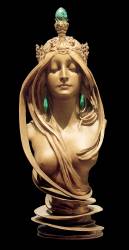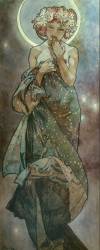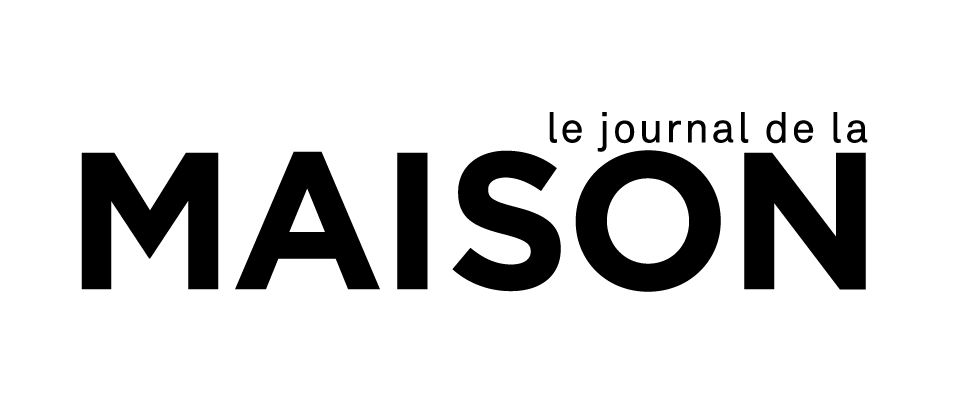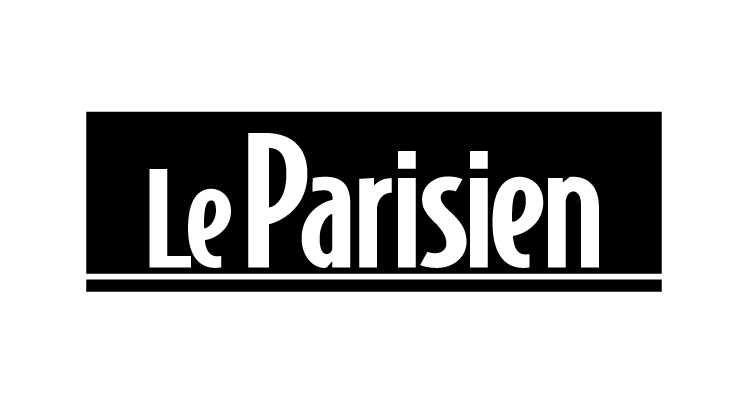Artwork of Alfons Mucha
A major Czechoslovakian artist in the history of art and a renowned poster artist, Alfons Mucha drew on all the techniques of the graphic and decorative arts of the second half of the 19th century and the early 20th century to create his own art deco style, which captivated the whole of Paris before being exported all over the world.
Discover the most beautiful posters and posters, as well as the sublime paintings and drawings that Alfons Mucha produced during his rich career, with a painting taken from a fragment of the frieze decorating the Bosnia-Herzegovina Pavilion at the 1900 Universal Exhibition, the poster for "Moët et Chandon: Grand Crémant Impérial", a work representative of the advertising illustrations that account for a large part of the Czech artist's catalogue, "The Four Seasons", a quadriptych in the purest Mucha style, and the portrait of Sarah Bernhardt in "Gismonda", a work in the art-nouveau style that was to become a key page in Alfons Mucha's career and success.
Treat yourself to a reproduction of Alfons Mucha, one of the most renowned Czech artists and a key illustrator in the history of graphic design, and find out more about his biography.
Biography of Alfons Mucha.
From Moravia to Paris: Alfons Mucha's education.
Born in 1860 in southern Moravia, now the eastern third of the Czech Republic, Alfons Mucha quickly developed a passion for the arts, particularly singing and drawing, during his school years in Brno, the region's capital. After working as a court clerk for a few years, the then 18-year-old Moravian attempted to enter the Academy of Fine Arts in Prague. However, his application was turned down because of his paintings, and the art school even advised him to change his voice and not to go into the arts. Alfons Mucha did not give up, however, and did not turn his back on art. It was during this period that he began his artistic training independently, far from the official academies of applied arts, first in the decorative arts, as a decorator in his native region for theatre sets, then in Vienna, where while continuing to decorate for the theatre, he trained with the painter Hans Makart. In 1881, while working for a decorative arts company, the Ringtheater, a large popular theatre in Vienna, caught fire. Mucha, the company's youngest decorator, was sacked and forced to return to Moravia. It was at the end of the 19th century, between 1883 and 1889, that he worked for Count Egon Khuen-Belasi, who sponsored and financed Alfons Mucha's studies, enabling him to enter the Munich School of Fine Arts. At the school, he met several of his contemporaries, including the sculptor Ludwig von Herterich, one of his teachers, and his fellow student and future poster artist, Karel Vítězslav Mašek. To further his training as a painter, Mucha left Munich and decided in 1887 to go to Paris, where he attended the Colarossi Academy and the Académie Julian, where he met the future post-impressionist painter and future leader of the Nabis, Paul Sérusier.
Sarah Bernhardt and Alfons Mucha: a fruitful collaboration.
In Paris, Alfons Mucha was quickly hired as an illustrator by the Armand Colin publishing house, which produced the publicity posters for Sarah Bernhardt, an actress, tragedian, painter, sculptor and major celebrity of the second half of the 19th and early 20th centuries. After Mucha had produced a few decorations and compositions for his employer, Sarah Bernhardt asked him, when he was the only draughtsman present at the offices of the Parisian poster designer and printer on 24 December 1894, to produce the publicity poster for Victorien Sardou's play Gismonda, in which she played the lead role. At the beginning of 1895, Mucha finished the lithograph, and the poster campaign was a success that captivated the whole of Paris. Seen as a painting, collectors were quick to cut up the posters designed by Alfons Mucha, considered to be veritable objets d'art, the precursors of a new artistic movement. Won over by his highly innovative graphics, colours and depiction of women, Sarah Bernhardt offered him a 6-year contract to produce the various advertisements for his plays. This collaboration produced many original posters, including the lithograph of "La Dame aux camélias", "Médée" and "Hamlet".
Alfons Mucha: the essential Parisian illustrator.
Following the success of the posters he produced for Sarah Bernhardt, Alfons Mucha was increasingly sought after by brands and Parisian high society. His advertising work was to be found everywhere, from posters for the Champenois owners of the Moët et Chandon champagne brand, to cigarette packets, calendars and advertising magazines such as "La Plume". By the end of the century, all Parisians knew and recognised Alfred Mucha for his visuals taking as their muse female figures close to the mystical, with light hair and clothes, imbued with freedom, and featuring scrolls of floral motifs accompanied by richly decorated ornamentation. The high point came in 1900, when it appeared in the catalogue for the Universal Exhibition. It was in this context that Alfred Mucha was awarded the silver medal and the title of Chevalier de la Légion d'honneur.
Alfons Mucha's escapades in Brittany
Between 1899 and 1903, on the advice of his friend and painter Paul Gauguin, Alfons Mucha travelled to Brittany several times. Far from the Parisian editors, the artist wandered around, drawing inspiration from the craggy relief of Finistère, but above all from the costumes and decorative traditions of the women of the Bigouden region. Developing a growing interest in the region's graphic identity, he painted, in a more traditional style, the portrait of the Breton woman, and we can see in his work a whole section of this culture, with Bigouden peacock feathers, ram's horns and ferns, which fit in perfectly with the art deco ornamentation in vogue at the time. On a trip to Nantes, the Czech illustrator and graphic designer was even asked to work on decorations and posters for Louis Lefèvre-Utile biscuits. The founder of the brand, better known today as LU, was passionate about the decorative arts, as evidenced by the two towers of the LU factory, an art nouveau building directly inspired by the new Parisian commercial buildings such as Printemps and Galeries Lafayette. This Breton period would leave its mark for the rest of Alfons Mucha's life, notably on the banknotes of the new Czechoslovak nation, which he designed and in which he incorporated Breton motifs.
A mixed success in the United States for Alfons Mucha.
Benefiting from unprecedented success in the world of poster artists and illustrations in France, Alfons Mucha began to make a name for himself in the new art stronghold, the United States, and more specifically in New York and Chicago. Wishing to experiment with other techniques, Mucha moved away from the code of art nouveau to concentrate on oil painting. Unfortunately, his canvases were not as successful as he had hoped, and his paintings held little interest for the American public. So, mainly for financial reasons, he left the painting format and returned to the posters and drawings that had made him such a success in Europe.
Alfons Mucha returns to Prague.
The initiator of the Slavic Committee in the United States, Alfons Mucha, very inspired by nationalist cultures, as he was in Brittany, and particularly patriotic, decided to return to Europe, and more precisely to Prague, with the idea of painting a monumental ensemble of 20 pictures, chronologically recounting the history of the Slavic peoples. To support him in his endeavour, Charles Crane, an industrialist he had met in the United States and who wished to gain influence in the Slavic countries, became an important patron of Mucha's work. This is how, in 1928, after 18 years of conception, "The Slav Epic" came into being, a major project in the painter's career. At the same time, Mucha, as a master of art nouveau, continued to paint frescoes and other decorative panels for prestigious buildings, and after the collapse of the Austro-Hungarian Empire and the independence of Czechoslovakia, he created the decorations for the stamps and banknotes of this brand new country.
The end of Alfons Mucha's life and posterity.
In 1938, on the eve of war, Alfons Mucha developed pneumonia. Weakened, the artist, a great defender of Slavic culture and member of the Freemasons, was arrested and interrogated at length by the Gestapo when he entered the country in 1939. Mucha did not recover, and although he was released, he died on 14 July 1939 in Prague, after a rich career in which he established his trademark in the world of decorative arts and the plastic arts in general, and inspired many contemporary artists of the time and today. A number of his works and lithographs can be found in the collections of the National Museum in Prague, notably in "L'épopée slave", in the exhibition at the Musée Carnavalet in Paris, at the Museum of Contemporary Art in San Francisco, and in a number of temporary exhibitions, including those at the Musée des Beaux-Arts in Quimper, the Grand Palais and the Musée du Luxembourg in Paris.
Learn more about the life and the works of Alfons Mucha.
















































































































































